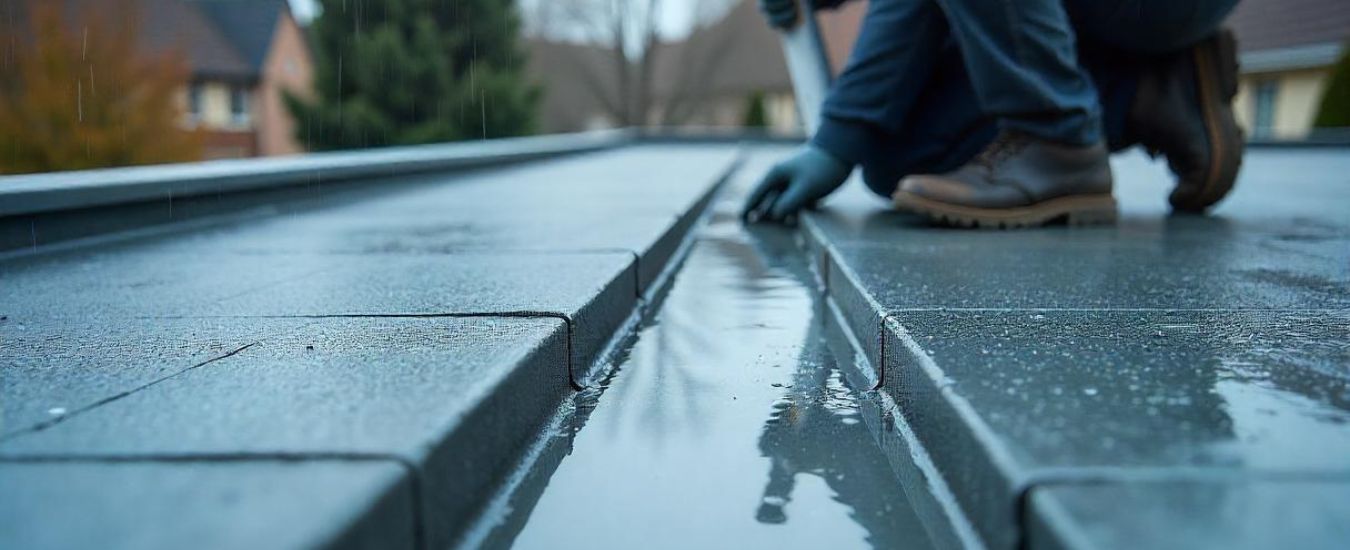Water leakage from concrete roofs is more than just a nuisance—it’s a threat to your home’s safety and value. By understanding the causes and using proven waterproofing techniques, you can seal those leaks permanently. Whether you go DIY or hire a pro, taking timely action will save you from costly future repairs.
Understanding the Causes of Roof Water Leakage
A leaking concrete roof isn’t just an annoyance—it can lead to serious structural damage, mould growth, and costly repairs. Understanding the root cause is the first step in solving the problem.
Common Structural Weaknesses
Concrete slabs often develop hairline cracks over time due to thermal expansion and contraction, settling, or poor material mix. These cracks are the main entry point for rainwater.
Poor Construction Practices
Improper curing, lack of slope, or substandard materials during construction can create weak points in the roof that are vulnerable to water seepage.
Weathering and Aging of Roof
Over time, the surface layer of the concrete becomes porous due to UV rays, rainfall, and temperature extremes, causing water absorption.
Improper Drainage or Water Accumulation
Flat roofs without proper slope or clogged drainage pipes lead to ponding water, which increases leakage risk.
Early Signs of Concrete Roof Leakage
Before water starts dripping from the ceiling, your home may give you subtle warning signs.
Damp Patches and Water Stains
Brown or dark spots on ceilings or walls indicate moisture build-up—a sign of a hidden leak.
Peeling Paint or Plaster
When paint or POP begins to flake or blister, it’s often due to water trapped behind the surface.
Foul Odor and Mold Growth
Musty smells or black patches in corners are caused by mould spores thriving in damp conditions.
How to Stop Water Leakage from the Concrete Roof?
Materials Required to Fix a Leaking Roof
Let’s gear up with the right materials before the repair process begins.
Waterproofing Chemicals and Coatings
Choose from acrylic polymer-based waterproofing solutions, cementitious slurries, or PU membranes.
Sealants and Crack Fillers
Use polymer-modified mortar or ready-to-use crack sealants to close visible hairline and wide cracks.
Bituminous Membrane and Acrylic Paints
Apply bituminous sheets or waterproof paints like elastomeric acrylic coating to seal large areas.
Tools for Surface Cleaning and Application
Basic tools include a wire brush, pressure washer, trowel, roller/brush, and protective gloves.
Waterproofing Techniques for Concrete Roofs
Here are the top waterproofing methods suitable for concrete roofs:
Cementitious Waterproofing
A mix of cement, sand, and liquid polymers, it’s cost-effective and ideal for new concrete slabs.
Liquid Waterproofing Membrane
This seamless coating can be sprayed, rolled, or brushed onto the roof, providing flexibility and UV resistance.
Bituminous Coating
Bitumen-based waterproofing is highly water-resistant and suited for industrial and residential roofs.
Polyurethane Liquid Membrane
Best for flat roofs exposed to the sun, it offers superior elasticity and durability.
Elastomeric Roof Coating
Highly elastic and weatherproof, it can stretch and return to shape, perfect for areas with frequent thermal shifts.
Step-by-Step Guide to Stop Water Leakage from Concrete Roof
Let’s walk you through the actual process of fixing a leaking concrete roof.
Clean the Surface Thoroughly
Remove dust, dirt, algae, and loose materials using a pressure washer or wire brush. Dry the surface before applying any solution.
Locate and Fill All Cracks
Inspect the roof for cracks, blisters, and porous patches. Fill them with epoxy or polyurethane sealant.
Apply Waterproof Coating
Choose a compatible waterproofing system and apply it in two to three coats, allowing time for each coat to dry completely.
Check Drainage and Slope
Ensure that rainwater outlets are not blocked. If the roof lacks a natural slope, consider adding a screed to improve flow.
Perform Water Testing
After 48 hours of curing, test by pouring water and checking for seepage. If dry, your repair is a success!
Tips for Long-Term Roof Maintenance
You’ve sealed the leaks, but let’s keep it that way for years to come.
Regular Inspection and Cleaning
Clean your roof every 3–6 months to prevent water blockage or moss growth.
Re-coating Frequency Guidelines
Reapply waterproofing every 5 years or sooner in extreme climates.
Seasonal Maintenance Checks
Inspect before and after the monsoon season to catch minor issues before they escalate.
Cost of Roof Leakage Repair and Waterproofing in India
Wondering about the budget?
DIY vs Professional Waterproofing
- DIY: ₹30–₹50/sq. ft. for basic materials
- Professional: ₹60–₹150/sq. Ft., depending on the method and warranty.
Estimated Cost Per Sq. Ft.
PU and elastomeric coatings are more expensive but offer longer durability.
Hidden Costs and Warranty Factors
Look out for surface preparation and labour charges, and check if the solution comes with a 5–10-year warranty.
Common Mistakes to Avoid During Roof Repairs
- Not cleaning the surface thoroughly
- Applying coatings on damp areas
- Ignoring drainage slope
- Using incompatible materials
Choosing the Right Waterproofing Contractor
- Ask for previous work references
- Choose certified applicators for branded products
- Prefer warranty-backed services
Eco-Friendly Waterproofing Options
Use low-VOC, water-based coatings and solar-reflective membranes to reduce environmental impact and heat absorption.
FAQs
What is the best waterproofing solution for concrete roofs in India?
Elastomeric acrylic and polyurethane membranes are ideal for long-lasting, flexible, and UV-resistant waterproofing.
How often should I waterproof my concrete roof?
Typically, every 5 years—or sooner if you notice signs of wear and leakage.
Can I fix concrete roof leakage during the rainy season?
It’s not recommended. Always fix roof leaks during dry weather to ensure proper curing and adhesion.
Is roof leakage repair covered under home insurance?
Depends on your policy. Some cover it if it results from a sudden incident, not from poor maintenance.
Can I use regular paint to stop leakage?
No. You need waterproofing paint specifically designed for terraces and roofs, not standard decorative paint.

